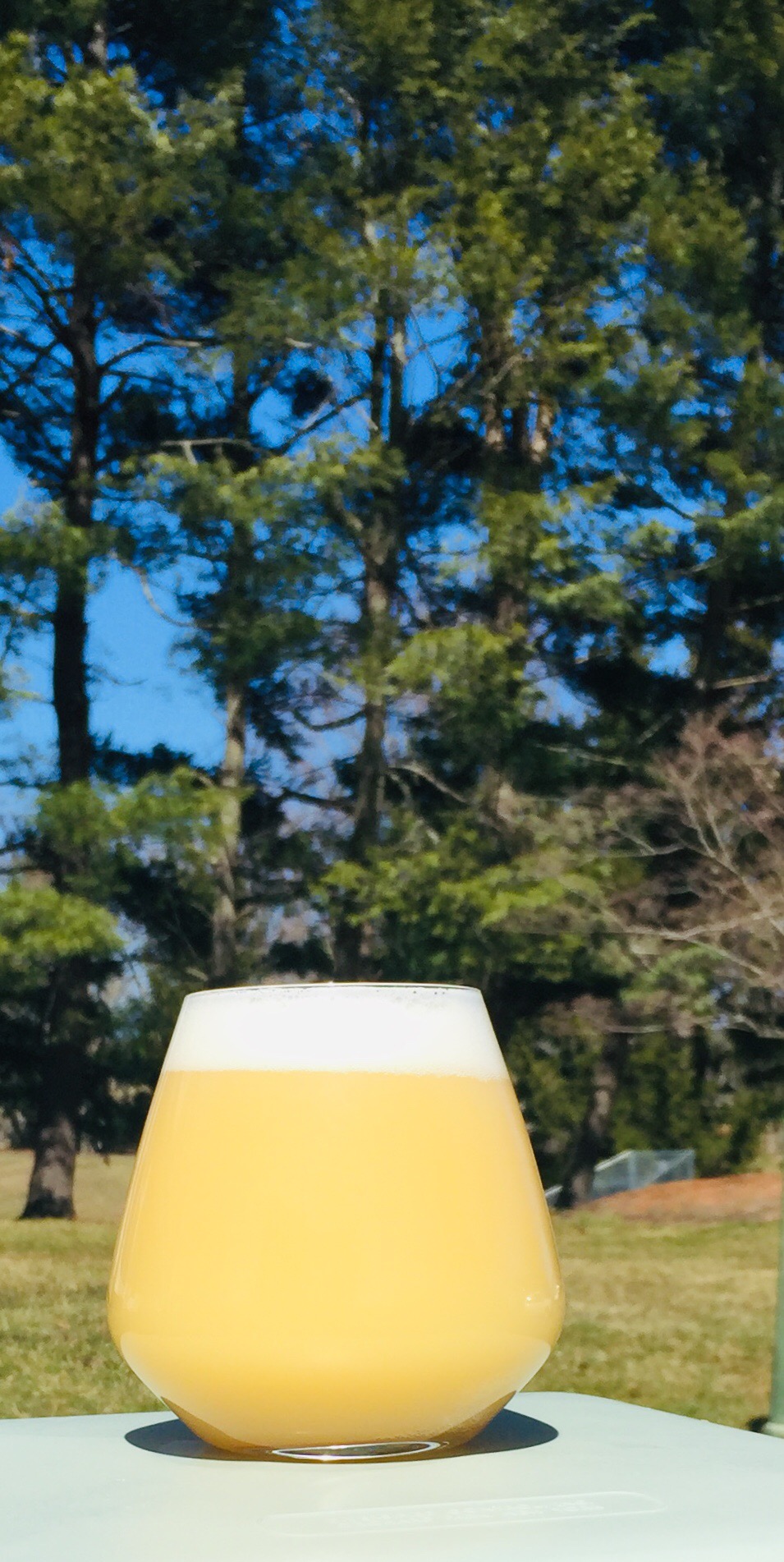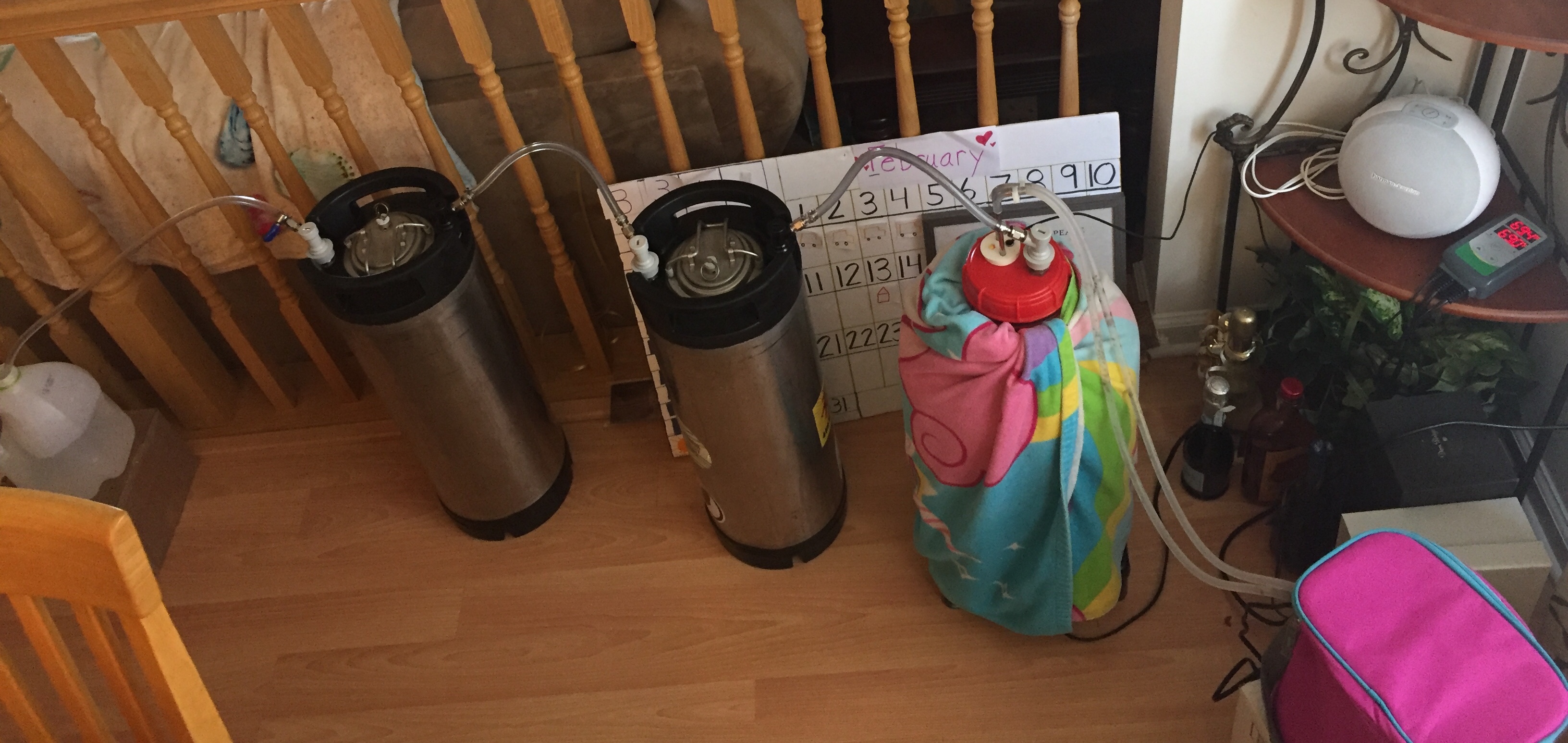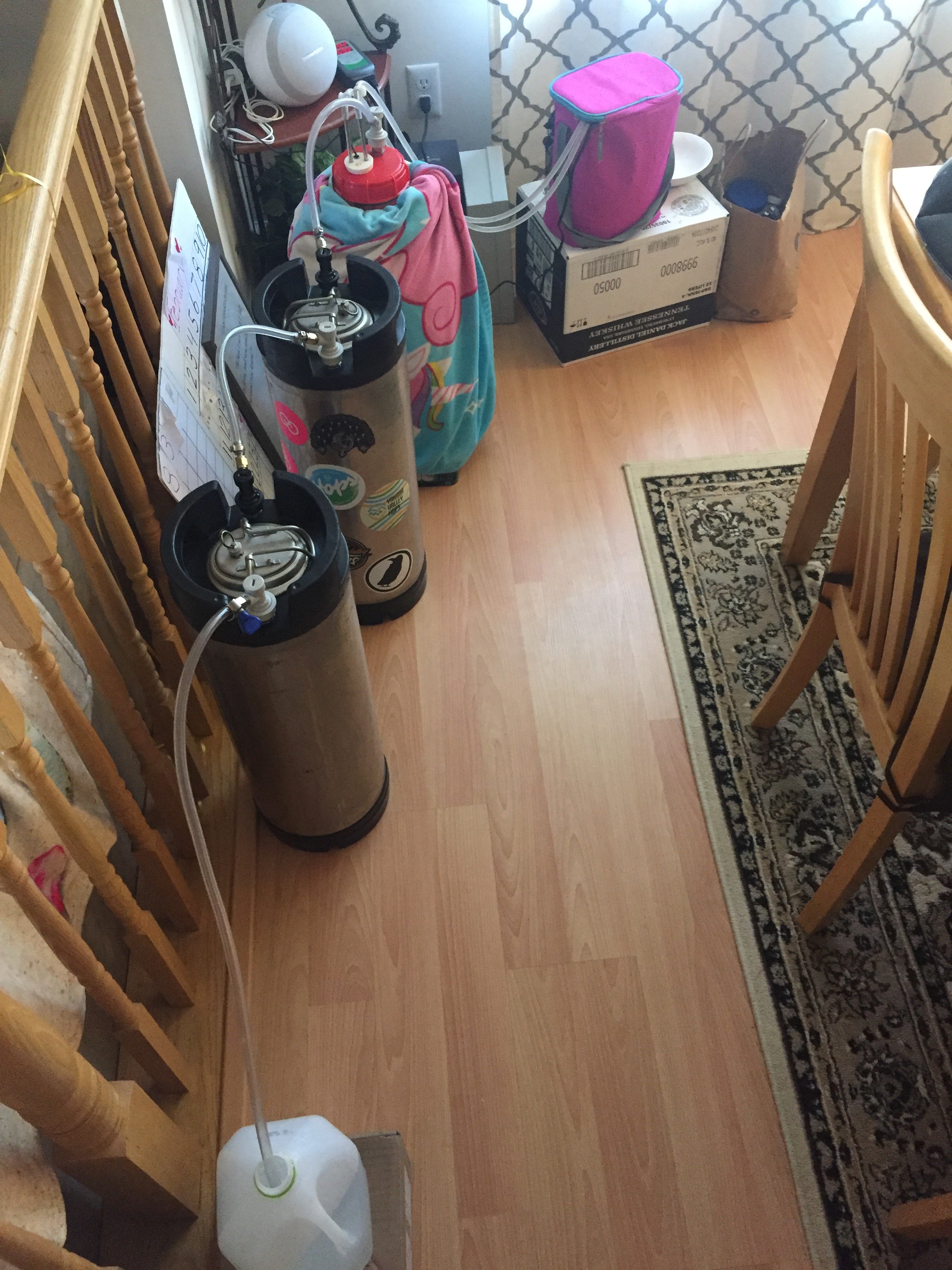NEIPA #2 is in the books. Going into a 3 gallon keg, went with a little larger batch with the plan of leaving some of the material behind
Original Gravity: 1.075
Final Gravity: 1.019
ABV (standard): 7.37%
IBU (tinseth): 25.47
SRM (morey): 6.24
Mash pH: 5.72
FERMENTABLES:
Pale 2-Row (75.7%)
White Wheat (16.2%)
Flaked Oats (5.4%)
Honey Malt (2.7%)
HOPS:
1 oz - AU Galaxy, Type: Pellet, AA: 14, Use: Whirlpool for 20 min at 160 °F, IBU: 13.98
1 oz - Mosaic, Type: Pellet, AA: 11.5, Use: Whirlpool for 20 min at 160 °F, IBU: 11.48
1 oz - AU Vic Secret, Type: Pellet, AA: 17.4, Use: Whirlpool for 20 min at 160 °F
1 oz - AU Galaxy, Type: Pellet, AA: 14, Use: Dry Hop (High Krausen) for 5 min
1 oz - Mosaic, Type: Pellet, AA: 11.5, Use: Dry Hop (High Krausen) for 5 min
1 oz - AU Vic Secret, Type: Pellet, AA: 17.4, Use: Dry Hop (High Krausen) for 5 min
MASH GUIDELINES:
1) Temperature, Temp: 151 F, Time: 60 min, Amount: 4.5 gal
YEAST:
Wyeast - London Ale III 1318
Starter: Yes
Attenuation (avg): 73%
TARGET WATER PROFILE:
Profile Name: Light colored and hoppy
Ca2: 100
Mg2: 12
Na: 8
Cl: 153
SO4: 81
HCO3: 0
Water Notes:
Bru'n Water pH - 5.35
Everything went well, hit all my numbers and such. Used a paint strainer bag during the whirlpool. Worked pretty well to keep some of the hop material out of the fermenter...but was a PITA to work with. May be time to look at a hop spider. None the less, I was able to remove a good amount of hop material that should help with the transfer. Plan to bag my DH, to help keep the hop material out of the keg also. Probably a lot of basic process stuff for many of you, but I'm new to kegging, and new to brewing these...so.
Overall I was stoked with how my 1st NEIPA came out, despite the troubles I had. Think this one should be even better, but ready to see how it goes.















![Craft A Brew - Safale BE-256 Yeast - Fermentis - Belgian Ale Dry Yeast - For Belgian & Strong Ales - Ingredients for Home Brewing - Beer Making Supplies - [3 Pack]](https://m.media-amazon.com/images/I/51bcKEwQmWL._SL500_.jpg)














































